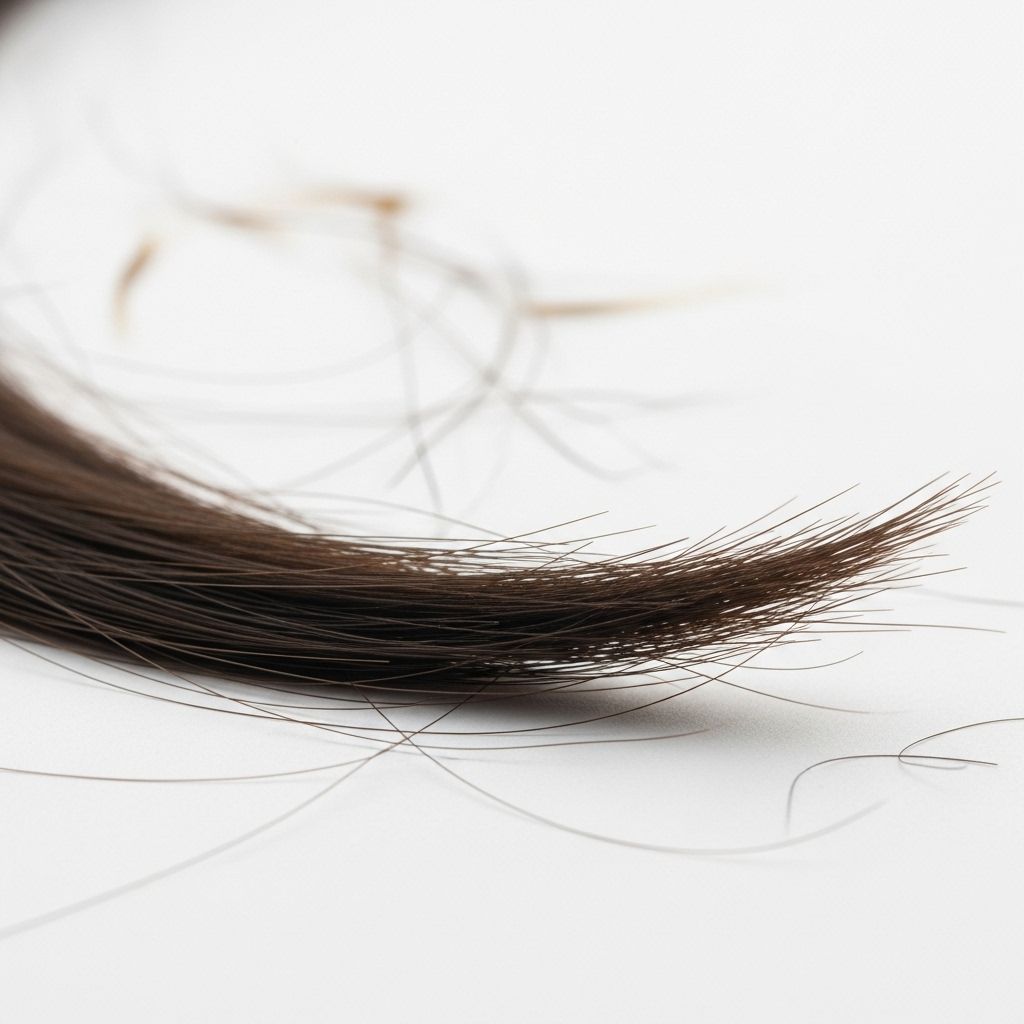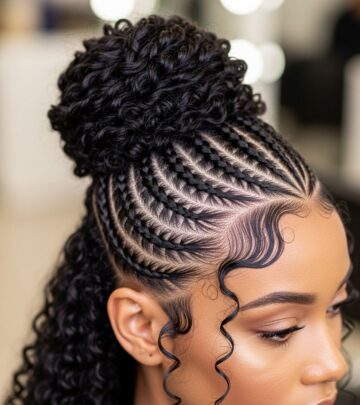9 Common Causes of Hair Loss and Thinning Hair
Explore the key medical, lifestyle, and hormonal factors that contribute to hair thinning and loss—and learn how to address them.

Experiencing more shedding than usual can be stressful, but understanding the root causes of hair loss is the first step to keeping your mane healthy and vibrant. Hair thinning in women is especially common, often triggered by a combination of genetics, hormonal changes, diet, stress, and even daily habits. This comprehensive guide will explain the most frequent reasons why hair falls out and what you can do to help restore fullness and shine.
What Is Hair Loss?
Hair loss, medically known as alopecia, refers to excessive shedding or thinning that can affect just the scalp or the entire body. It’s normal to lose 50–100 hairs a day as part of the hair’s growth cycle, but noticeable thinning or bald patches signal a problem with that cycle.
Both temporary and permanent factors can disrupt this balance. While some causes of hair loss are out of your control, many are manageable with lifestyle adjustments and proper treatment.
Most Common Causes of Hair Thinning
Below, discover the main culprits behind sudden or gradual hair loss, according to dermatologists and medical experts.
1. Telogen Effluvium (Stress-Induced Hair Loss)
Telogen effluvium is a temporary form of hair loss that occurs after your body undergoes a significant stressor. Common triggers include:
- Serious illness or high fever (including COVID-19)
- Major surgery or trauma
- Sudden weight loss
- Pregnancy and childbirth
- Extreme emotional distress
In telogen effluvium, more hairs than usual shift from the growing phase into the resting (telogen) phase, then shed out. The shedding typically becomes apparent 6–12 weeks after the stressful event. Women often notice handfuls of hair coming out while shampooing or styling. Though distressing, telogen effluvium usually resolves in several months once the underlying cause is addressed.
Key diagnostic sign: fallen hairs have a club-shaped bulb at the root, indicating normal cycling but abnormally rapid shedding.
Treatment tips:
- Identify and manage the stressor if possible
- Supportive care: gentle handling, scalp massages, and patience
- Consult a dermatologist for persistent or severe cases
2. Hereditary Hair Loss (Androgenetic Alopecia)
Genetics play a major role in hair thinning, with androgenetic alopecia being the most common cause. Often called female-pattern or male-pattern hair loss, this inherited condition leads to gradual thinning over time:
- Tends to run in families—gene can be inherited from either parent
- Women often notice widening at the part or thinning along the hairline behind the bangs
- Can start as early as the 20s
- Hormonal changes (e.g., menopause) can worsen the condition
Unlike telogen effluvium’s sudden shedding, hereditary loss is slow and chronic. Diagnosis is usually clinical but may be supported by blood tests.
Treatment options:
- Topical minoxidil (approved for both men and women)
- Prescription oral medications for women (consult your specialist)
- Low-level laser therapy
- Consider hair transplantation in advanced cases
3. Nutritional Deficiencies
A lack of essential nutrients in your diet—especially protein and iron—can contribute to increased hair fall:
- Hair is largely made of protein (keratin), so diets too low in protein may stunt new growth
- Iron deficiency (even without full-blown anemia) can disrupt hair cycling
- Recent dietary changes (e.g., becoming vegetarian or vegan without alternative protein sources) can be a risk factor
Low protein intake causes your body to conserve resources by reducing hair growth, usually resulting in diffuse thinning two to three months after intake declines.
Symptoms of deficiency may also include brittle nails, fatigue, or weakness. Proper diagnosis is possible with blood tests for total protein, iron, and ferritin.
Treatment tips:
- Eat a well-balanced diet with lean protein, leafy greens, beans, nuts, and seeds
- Supplement as recommended by your doctor
4. Hormonal Changes and Menopause
Hormonal shifts dramatically impact hair growth. Major life stages and conditions that alter hormone levels can disrupt your hair’s natural cycle:
- Pregnancy and postpartum period
- Stopping or starting birth control
- Thyroid disorders
- Menopause and perimenopause (lower estrogen and progesterone)
During menopause, the hair-protective effects of estrogen decrease while testosterone’s influence rises, causing more follicles to shrink and hair to thin (age-related thinning). Both men and women can experience hormonally driven loss as they age.
How to address it:
- Discuss hormonal evaluation and balance with your healthcare provider
- Use gentle styling products and avoid harsh treatments
5. Autoimmune Diseases and Medical Conditions
Certain medical conditions can trigger hair loss, especially those involving the immune system:
- Alopecia areata: The immune system attacks hair follicles, resulting in patchy bald spots that can come and go
- Thyroid disorders: Both underactive and overactive thyroid can cause diffuse hair loss
- Scalp infections: E.g., fungal infections such as ringworm, causing scaly, inflamed patches and breakage
Some conditions require a clinical diagnosis and targeted therapy. Treating the underlying disease often allows normal hair growth to resume.
6. Medications and Treatments
Many drugs list hair loss as a side effect. Some of the most common include:
- Cancer chemotherapy or radiation to the head
- Medications for arthritis, depression, heart problems, blood pressure, gout
- Excessive vitamin A supplementation
Shedding can begin weeks after starting a new medication and may resolve after stopping or switching drugs (under medical supervision).
7. Physical Stress and Recovery
Significant physical traumas, illness, or surgeries can shock hair follicles into a resting phase, much like emotional stress. Examples include:
- Severe infections (including high fevers)
- Major accidents or operations
- Chronic illness
Hair often regrows within 3 to 6 months post-recovery. Support regrowth by eating nutrient-rich foods and minimizing stress.
8. Hairstyles, Hair Care Practices, and Styling Damage
Certain hairstyles and frequent salon treatments can cause or worsen hair thinning. Known as traction alopecia, this type is due to pulling or breakage:
- Tight ponytails, braids, cornrows, buns
- Frequently used hot tools, curling irons, or straighteners
- Chemical processing: dyes, relaxers, perms, hot-oil treatments
Over time, chronic tension or chemical exposure can permanently damage hair follicles. Some signs include a receding hairline or thinning at the temples.
Prevention tips:
- Loosen hairstyles and alternate styles regularly
- Limit hot tool and chemical usage
- Use gentle detanglers and wide-toothed combs, especially on wet hair
9. Aging and Hair Loss
With age, hair naturally becomes thinner, drier, and less pigmented due to gradual reduction in follicle activity and slower regeneration cycles. Most people notice gradual thinning, more brittle texture, and increased shedding as part of the aging process.
Though age-related thinning is largely unavoidable, adopting healthy hair care routines and balanced nutrition can help maintain volume and scalp health.
Key Risk Factors for Hair Loss
- Family history of balding or thinning
- Increasing age
- Significant weight loss
- Medical conditions (e.g., diabetes, lupus, thyroid disorders)
- Exposure to chronic stress
- Poor nutrition
Prevention and Treatment Tips
While not all forms of hair loss are preventable—especially genetic types—there are steps you can take to minimize the risk and support healthy growth:
- Be gentle: Use detanglers, avoid tugging on wet hair, and limit tight hairstyles
- Avoid excessive heat or harsh chemical treatments
- Eat a well-balanced, protein- and iron-rich diet
- Address underlying medical issues and manage stress
- Protect hair from sun and environmental damage
- Discuss medications with your doctor if you suspect they’re affecting your hair
Table: Common Causes vs. Characteristics of Hair Loss
| Cause | Pattern/Sign | Key Features |
|---|---|---|
| Telogen Effluvium | Sudden, diffuse shedding | Usually occurs 6–12 weeks after stress or illness; reversible |
| Hereditary Hair Loss | Gradual thinning, widening part | Family history, starts in 20s/30s, chronic |
| Nutritional Deficiency | Generalized thinning | Related to protein/iron; may cause brittle nails, fatigue |
| Hormonal Changes | Varied—often diffuse loss | Pregnancy, menopause, thyroid, birth control changes |
| Medications | Onset after new drugs | Chemotherapy, blood pressure, antidepressants, vitamin A |
| Hair Styling | Thinning at temples, hairline | Traction alopecia from tight styles/chemicals; sometimes permanent |
Frequently Asked Questions About Hair Loss
Q: How much hair loss is normal?
A: Shedding 50–100 hairs per day is considered normal. Excessive shedding, patches, or noticeable thinning could mean an underlying issue.
Q: Will my hair grow back after telogen effluvium?
A: Most cases resolve within a few months as the hair cycle normalizes, and regrowth resumes. Support with gentle care and a healthy diet.
Q: Can changing my diet reverse hair loss?
A: Hair loss attributed to protein or iron deficiency can often be reversed by restoring those nutrients. Chronic or genetic causes may require additional medical therapy.
Q: When should I see a dermatologist?
A: If you notice patchy loss, sudden shedding, or scalp infections, or if self-care does not improve symptoms after 3–6 months, consult a dermatologist for diagnosis and targeted treatment.
Q: Are there effective treatments for hereditary hair thinning?
A: Treatments like topical minoxidil, oral medications (e.g., spironolactone in women), low-level laser therapy, and sometimes hair transplantation can help manage genetic hair loss, but early intervention yields the best results.
Takeaway: Understanding and Addressing Hair Loss
Hair loss can stem from a variety of sources, including genetics, hormonal fluctuations, lifestyle, medical conditions, and daily habits. Pinpointing the underlying cause is crucial for effective treatment and regrowth. With early intervention and supportive care—including healthy diet, appropriate styling, and medical evaluation—many types of hair loss can be halted or reversed, so don’t hesitate to seek expert advice if you notice changes to your hair’s thickness or volume.
References
- https://www.mayoclinic.org/diseases-conditions/hair-loss/symptoms-causes/syc-20372926
- https://www.prevention.com/beauty/a20450254/9-causes-of-hair-loss-and-thinning-hair/
- https://www.aad.org/public/diseases/hair-loss/causes/fall-out
- https://www.prevention.com/beauty/a20452258/12-highly-effective-treatments-for-hair-loss/
- https://www.prevention.com/health/a28250587/alopecia-hair-loss-treatment/
- https://pubmed.ncbi.nlm.nih.gov/28925637/
- https://my.clevelandclinic.org/health/diseases/16921-hair-loss-in-women
- https://www.prevention.com
- https://www.tandfonline.com/doi/full/10.1080/07853890.2016.1180426
Read full bio of Sneha Tete












